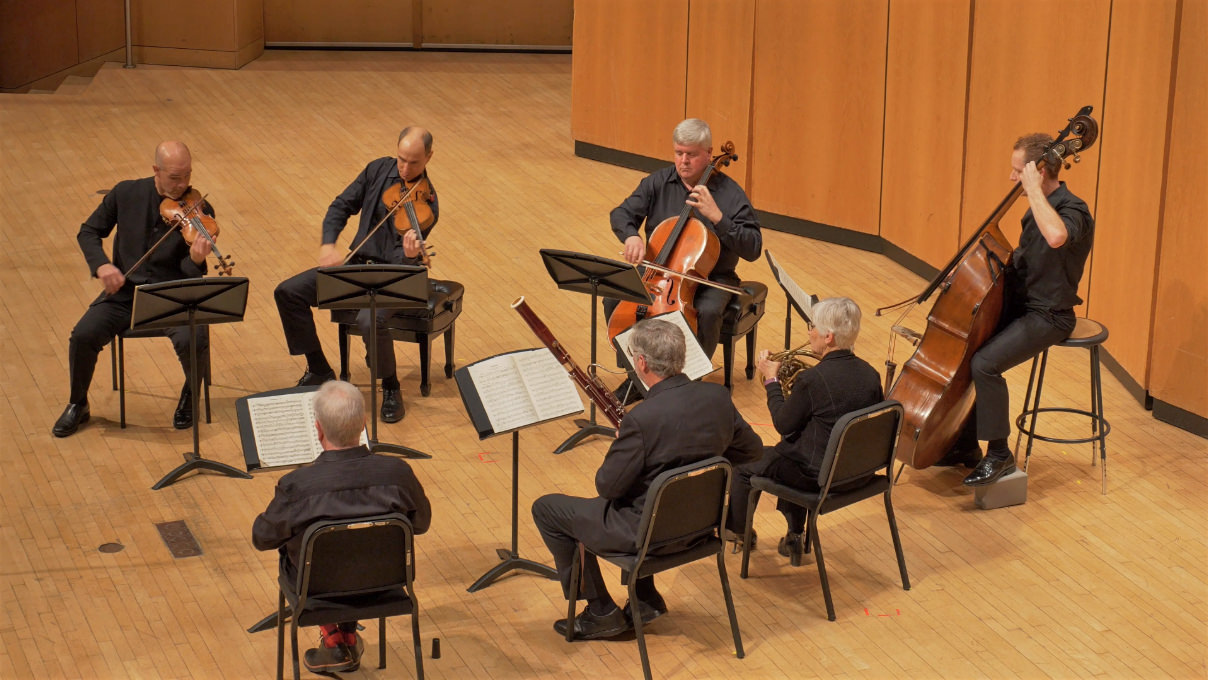Beethoven - Septet for Winds and Strings in E-flat Major, Op. 20
January 24, 2020
Performed as part of the 24th annual Winter Chamber Music Festival, this rendition of Beethoven’s Septet for Winds and Strings in E-flat Major, Op. 20, features Steven Cohen, clarinet; Lewis Kirk, bassoon; Gail Williams, horn; Alex Kerr, violin; Lawrence Neuman, viola; Stephen Balderston, cello; and Andrew Raciti, double bass.
Adagio — Allegro con brio
Adagio cantabile
Tempo di Menuetto
Tema con variazioni
Scherzo: Allegro molto e vivace
Andante con moto alla Marcia—Presto
The Septet, Op. 20, was Beethoven’s most popular work during his lifetime. Even before it was published, it had gained a reputation through circulating manuscript copies, and the score was in great demand as soon as it was printed by Hoffmeister in 1802.
To make the music available to the widest range of music lovers and amateur performers, arrangements by many hands for all manner of instrumental ensembles were concocted and sold to an eager public. Versions for piano (two or four hands), string quartet, guitar duet, and even wind band appeared; the composer himself rescored the work as a trio for piano with clarinet (or violin) and cello and issued it in 1803 as his Op. 38. For the three decades after its composition, the E-flat Septet was played in homes, concerts, and meeting halls more frequently than any other music by Beethoven, and it was one of the chief vehicles that spread his fame during the early years of the 19th century.
Beethoven apparently modeled his septet on Mozart’s D Major Divertimento (K. 334). Both works comprise six movements (one of which is a substantial set of variations), share a similar musical style, and are more closely related in form and mood to the lighthearted serenade than to the weighty symphony.
